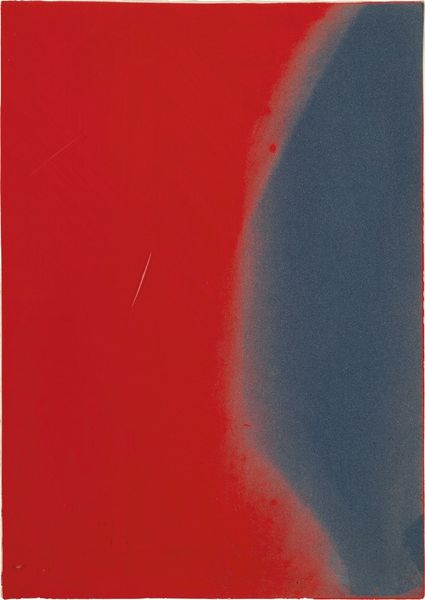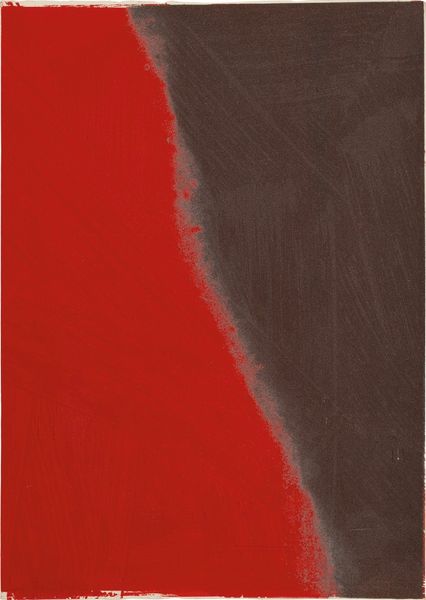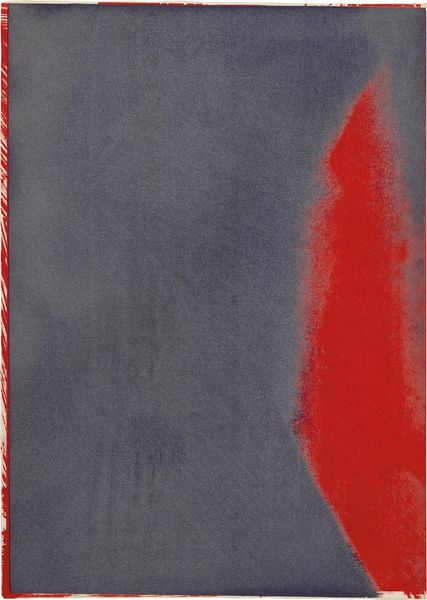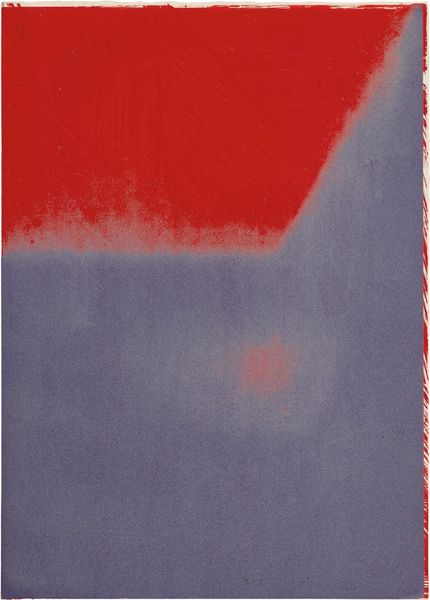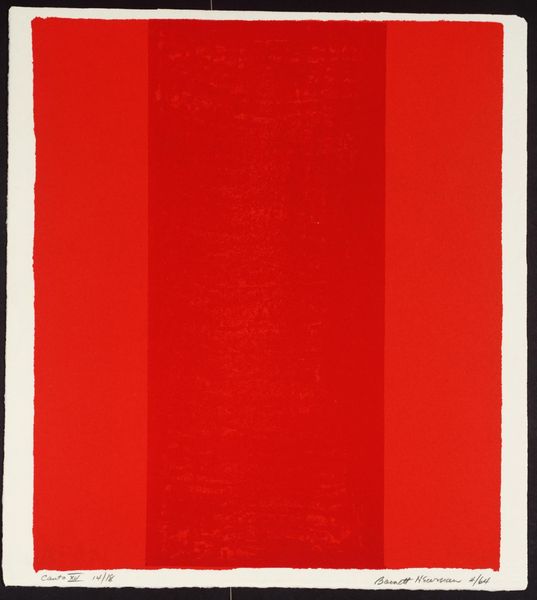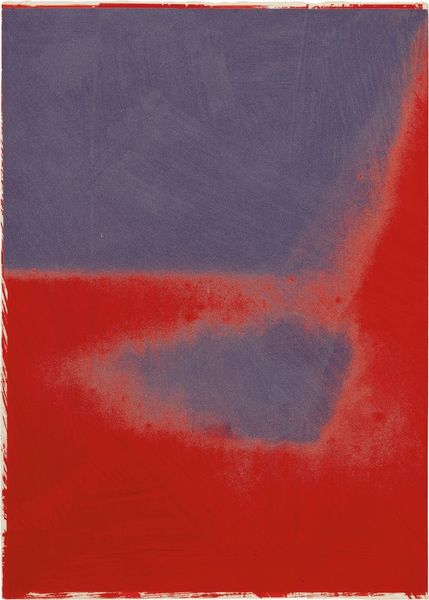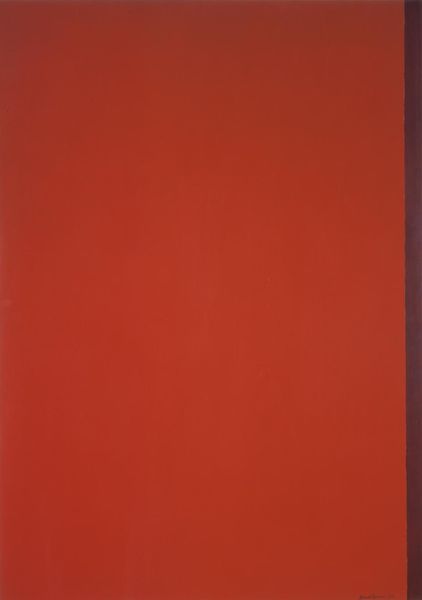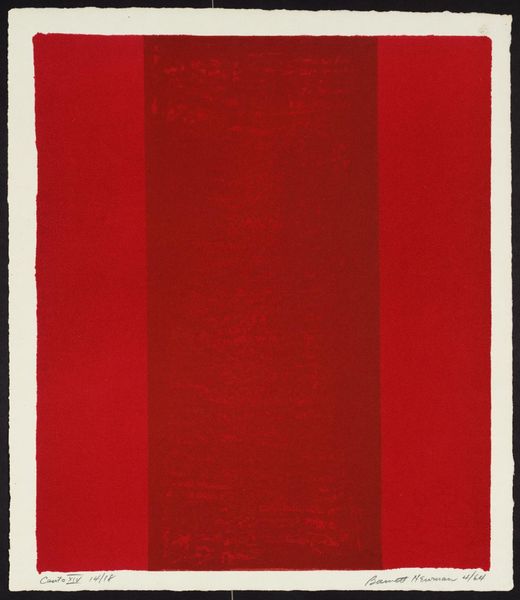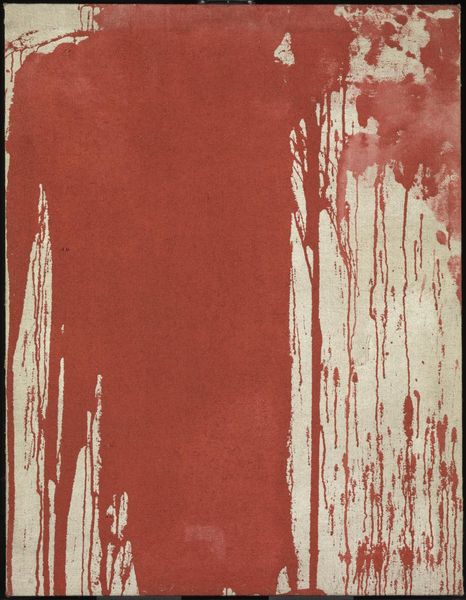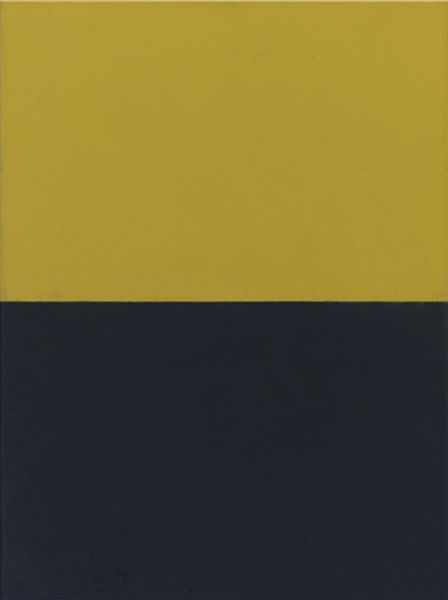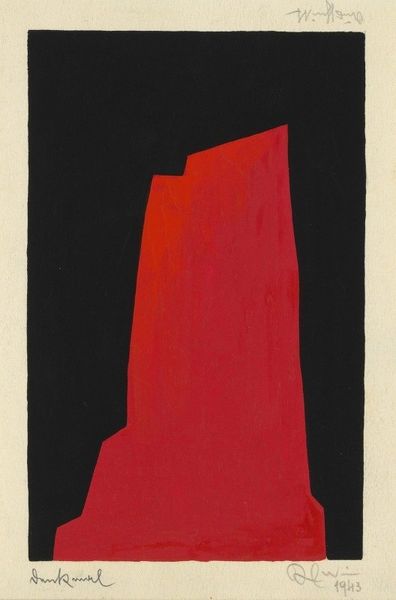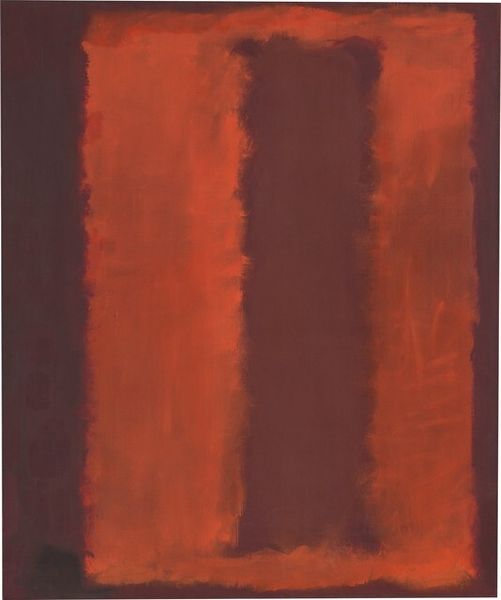
Copyright: Modern Artists: Artvee
Editor: This is Andy Warhol's "Shadows I #4" from 1979, made with acrylic paint and screenprint. At first glance, the composition is striking—a stark contrast between grey and red. What's your take on it? Curator: The Shadows series, for me, operates on multiple levels. It's undeniably beautiful in its abstract simplicity, recalling Colour Field painting and Minimalism, yet, within the context of Warhol's Pop Art, it can also be interpreted as a commentary on mass production and the commodification of art. Editor: Commodification even in abstract art? How does that work? Curator: Warhol, by using the screen-printing process, embraced repetition. The "Shadows" exist as multiples, defying the notion of the unique art object, but it’s more than that. The Shadows series emerged in a period where Warhol explored the abstract more deeply, and can be seen as both aesthetic experimentation and an implicit political statement. Can abstraction carry political weight? Editor: I guess it depends on the artist and the context. It's hard to see this initially as a protest or statement. I mainly saw forms. Curator: Absolutely, and your initial reaction is valid! Perhaps Warhol challenges us to question whether art can be both decorative and critical, or if these apparent contradictions can coexist. What’s changed for you in viewing it? Editor: I see that there's a conceptual layer to the work that challenges preconceived notions about the art market. The bright colors are not just aesthetics, they're provocative. Curator: Exactly! It encourages viewers to see how even seemingly apolitical aesthetics can be a critical form.
Comments
No comments
Be the first to comment and join the conversation on the ultimate creative platform.
